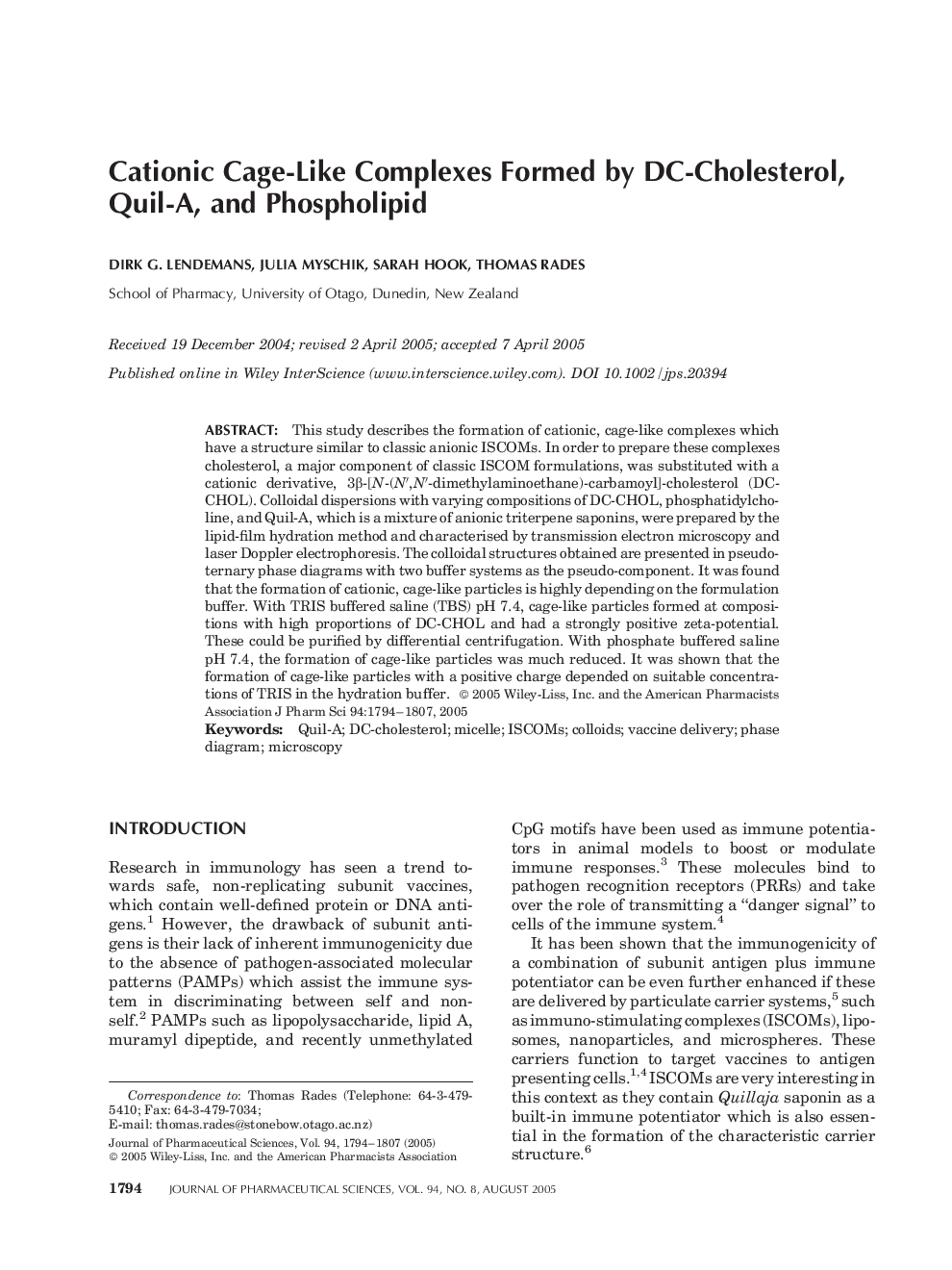| Article ID | Journal | Published Year | Pages | File Type |
|---|---|---|---|---|
| 8994815 | Journal of Pharmaceutical Sciences | 2005 | 14 Pages |
Abstract
This study describes the formation of cationic, cage-like complexes which have a structure similar to classic anionic ISCOMs. In order to prepare these complexes cholesterol, a major component of classic ISCOM formulations, was substituted with a cationic derivative, 3β-[N-(Nâ²,Nâ²-dimethylaminoethane)-carbamoyl]-cholesterol (DC-CHOL). Colloidal dispersions with varying compositions of DC-CHOL, phosphatidylcholine, and Quil-A, which is a mixture of anionic triterpene saponins, were prepared by the lipid-film hydration method and characterised by transmission electron microscopy and laser Doppler electrophoresis. The colloidal structures obtained are presented in pseudo-ternary phase diagrams with two buffer systems as the pseudo-component. It was found that the formation of cationic, cage-like particles is highly depending on the formulation buffer. With TRIS buffered saline (TBS) pH 7.4, cage-like particles formed at compositions with high proportions of DC-CHOL and had a strongly positive zeta-potential. These could be purified by differential centrifugation. With phosphate buffered saline pH 7.4, the formation of cage-like particles was much reduced. It was shown that the formation of cage-like particles with a positive charge depended on suitable concentrations of TRIS in the hydration buffer.
Related Topics
Health Sciences
Pharmacology, Toxicology and Pharmaceutical Science
Drug Discovery
Authors
Dirk G. Lendemans, Julia Myschik, Sarah Hook, Thomas Rades,
